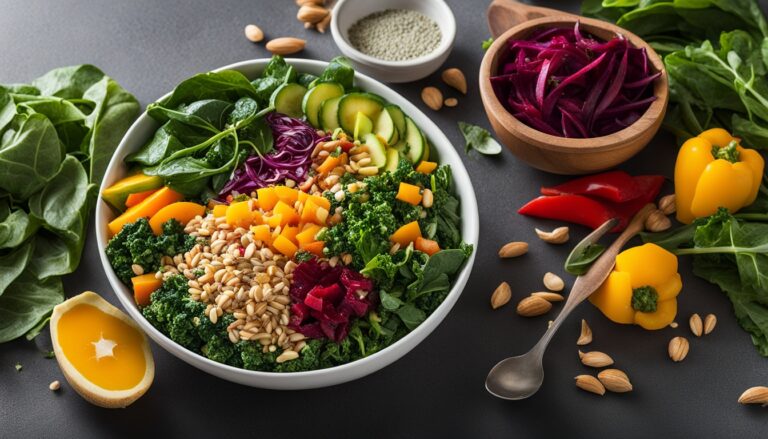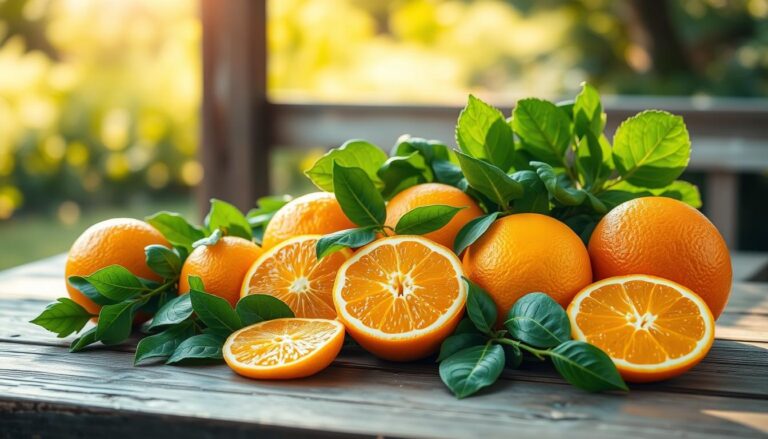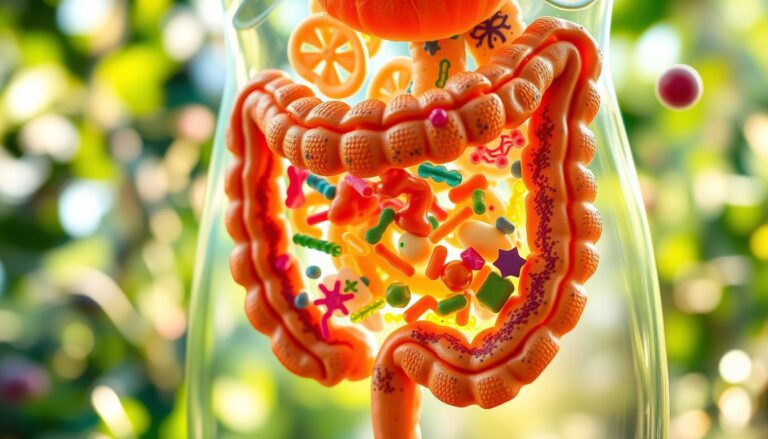Can you lose 5-10 pounds in just 14 days? Science says yes, with the right plan. The Mayo Clinic Diet shows how to eat to lose weight fast and safely.
For quick weight loss, eat foods that are low in calories but high in nutrients. The Mayo Clinic Diet focuses on protein and fiber. This keeps your metabolism high and helps you lose fat without losing muscle.
Prepping meals ahead of time makes sticking to the diet easier. This includes cooking chicken or making veggie niçoise pitas. The diet also cuts down on bad carbs and salt. Adding 30 minutes of exercise a day can help even more, making you healthier.
Key Takeaways
- Structured 14-day meal plans averaging 1,200–2,000 calories daily enable safe 3–4 pound losses.
- Protein ranges of 35–72g/day preserve muscle while reducing caloric intake.
- Mayo Clinic guidelines prioritize vegetables, low-glycemic foods, and sodium management to avoid water retention.
- Behavioral changes like prepping meals and tracking hydration improve long-term success.
- Rapid weight loss phases must transition into sustainable habits to prevent rebound effects.
Understanding Rapid Weight Loss: Is Two Weeks Realistic?
Rapid weight loss in two weeks can be tempting, but science sets realistic goals. The two-week weight loss diet must balance dreams with safety. Experts say losing 1–2 pounds a week is better, as it’s safer and more lasting.
For quicker results, very low-calorie diets can help. But, they should only be done under a doctor’s watchful eye. This is to avoid serious health issues like gallstones.

Science-Backed Facts About Short-Term Weight Loss
- A 500–750 calorie daily deficit is needed to lose 1–2 pounds weekly.
- Individual outcomes vary: Those with higher initial weight may see quicker initial results.
- Metabolic adaptation slows weight loss over time, making consistent deficits critical.
A 2023 study showed that eating refined grains can lead to weight gain. This highlights the importance of whole grains in any diet. Protein is also key—it helps you feel full and reduces hunger.
Exercise is essential too. Aim for 150+ minutes of aerobic activity and strength training each week. This helps burn fat and keep muscle.
Diets that promise too much too soon can lead to nutrient deficiencies. The CDC recommends a slow and steady approach for lasting results. A good two-week plan focuses on small, gradual calorie cuts. Eating whole foods, staying hydrated, and getting enough sleep (7–9 hours) is key to progress without harming your health.
Setting Healthy Expectations for a 2-Week Timeline
Understanding weight loss science is key to setting realistic goals. A diet plan for quick weight loss must match our body’s needs. The first weight loss is often water, not fat. Knowing this helps keep motivation and health on track.

“A safe weight loss rate is 1–2 pounds weekly,” states the CDC, stressing the importance of steady progress over quick fixes.
Distinguishing Between Water Weight and Fat Loss
Water weight loss happens fast because of less sodium and glycogen. It’s a quick change but not lasting. Fat loss, on the other hand, needs a steady calorie cut. Here’s how it works:
| Type | Timing | Mechanism | Health Impact |
|---|---|---|---|
| Water Weight | Days 1–7 | Fluid retention changes | Reversible; not permanent |
| Fat Loss | Weeks 2+ | Calorie deficit over time | Permanent if sustained |
A healthy eating for quick weight loss plan should focus on slow, steady progress. Aim for 1–2 pounds a week by cutting 500 calories daily. Stay away from diets that promise too much too soon, as they can lead to nutrient gaps. Focus on staying hydrated and eating a balanced diet for lasting results. Monitor progress with energy levels and waist size, not just the scale. Building sustainable habits is the key to lasting success.
What Do I Eat to Lose Weight in 2 Weeks? The Fundamentals
For quick weight loss foods, start with a balanced diet. Choose foods for rapid weight loss that are low in calories but high in nutrients. Focus on protein, fiber, and healthy fats to keep you full and energized.
“The best weight-loss plans focus on sustainable habits, not extreme restrictions.”
Protein helps keep your metabolism steady and muscle mass intact. Eat lean meats like chicken breast and plant-based options like black beans. Aim for 5–7 oz of protein daily. Add fiber-rich veggies like Brussels sprouts to feel full longer. Drinking water before meals can cut down on calories by 13%, research shows.
| Food Type | Protein per 100g |
|---|---|
| Lean Ground Beef | 20.8g |
| Skinless Chicken Breast | 23.2g |
| Black Beans | 21.6g |
| Lentils | 9.02g |
- Eat 2–5 cups of veggies daily for fiber and vitamins
- Limit foods high in saturated fats, like butter
- Choose whole grains like quinoa over refined ones
- Add healthy fats like almonds in small amounts
Following these tips can lead to safe weight loss of 0.5–2 lbs/week. Make sure to eat a variety of foods to get all the nutrients you need. Always talk to a healthcare provider before starting any diet.
Protein-Rich Foods That Accelerate Weight Loss

Protein is key for foods for rapid weight loss because it boosts metabolism and reduces hunger. Foods high in protein make you feel full by lowering ghrelin and increasing PYY. This helps prevent overeating.
Protein also burns more calories during digestion than carbs or fats. This is because it has a higher thermic effect. This means it can help you lose weight faster.
Lean Meat and Poultry Options
- Chicken breast (4 oz): 32g protein)
- Ground turkey (93% lean, 4 oz: 26g protein)
- Beef sirloin (3 oz: 25g protein)
Choose grilled or baked lean meats to avoid extra fats. Men should aim for 1.6g/kg of body weight in protein for weight loss foods for rapid results.
Plant-Based Protein Sources
| Food | Portion | Protein (g) |
|---|---|---|
| Lentils | ½ cup cooked | 9g |
| Chickpeas | ½ cup cooked | 7g |
| Tempeh | 3 oz | 20g |
Pair legumes with grains like quinoa for complete proteins. Tofu is low in calories and high in protein, making it great for stir-fries or salads.
Seafood Selections for Maximum Results
Fatty fish like salmon are rich in omega-3s, which fight inflammation. Sardines are also packed with nutrients. Eating 3–4 seafood meals a week can help balance protein and healthy fats.
Adults need 1.2–2g of protein per kg of body weight each day. For a 150-lb person, that’s 82–136g of protein. Focus on these foods to keep muscle while losing fat, as studies show.
Fiber-Packed Foods That Keep You Fuller Longer
Adding fiber-rich foods to your 2-week weight loss meal plan can help you feel full longer. Fiber slows down digestion, keeping you full and supporting your metabolism. For quick weight loss, focus on foods high in both soluble and insoluble fiber. This helps your body absorb nutrients better and keeps blood sugar stable.

- Legumes: 1 cup of cooked lentils provides 15.5g fiber; black beans offer 15g per cup.
- Vegetables: Artichokes deliver 14g per cup, while broccoli contributes 5g per serving.
- Nuts and Seeds: Chia seeds supply 10g per 2 tablespoons; almonds add 3.5g per ounce.
- Whole Grains: Quinoa contains 5g per cup, and barley provides 6g cooked.
A 2-week weight loss meal plan should aim for 25–35g daily fiber. For example, a morning meal of 1 cup raspberries (8g) with oatmeal (4g) and almonds (3.5g) totals 15.5g. Gradually increase intake to avoid digestive discomfort, pairing fiber with 2 liters of water daily.
More than 90% of women and 97% of men fail to meet fiber requirements, highlighting its underappreciated role in weight management.
Choose soluble fibers like glucomannan (in oats) for a gel-like texture in the stomach. This boosts fullness. Avoid guar gum supplements, as studies show limited efficacy. Focus on whole foods to get the most nutrients while following your best foods for fast weight loss strategy.
Strategic Carbohydrates: Which Ones Support Quick Weight Loss
Carbohydrates are key in a diet plan for quick weight loss. Choosing the right carbs at the right time helps you feel full and gives you steady energy. This keeps your metabolism working well without slowing down your weight loss.

Complex Carbs vs. Simple Carbs
Complex carbs like quinoa and farro give you energy for a long time because they digest slowly. A 2021 study found that whole grains can make you feel less hungry by 26% compared to refined grains. For example, cooled boiled potatoes have resistant starch, a fiber that slows down glucose absorption.
On the other hand, simple carbs like sugary snacks cause your blood sugar to spike quickly. This can lead to cravings and eating too much.
Timing Your Carb Intake for Optimal Results
Eating carbs with exercise helps burn fat better. A 2007 study found that eating a vegetable soup before a meal can cut down calorie intake by 20%. Here are some tips:
- Eat complex carbs with protein at meals (like oatmeal with eggs)
- Save high-G.I. carbs for after workouts
- Add fiber-rich carbs like chia seeds to keep you full longer
Low-Glycemic Options That Won’t Spike Blood Sugar
Choose quick weight loss foods with low glycemic indices. These include:
- Steel-cut oats (3 grams fiber/½ cup) with beta-glucan
- Black rice (7g fiber/½ cup) for metabolic health
- Popcorn (100 calories/3 cups) as a whole-grain snack
A 2023 study showed that chia seeds can make you feel 30% fuller when eaten with yogurt. These foods fit well into diet plans for quick weight loss and keep your diet balanced.
Healthy Fats That Actually Help You Shed Pounds
For fast weight loss, adding healthy fats to your diet is key. They help keep your energy up and your metabolism running smoothly. But, avoiding fats is a common mistake. Research shows that some fats can make you feel full and lower inflammation.
The USDA says 2 tablespoons of chia seeds give you 25% of your daily fiber. This helps keep your energy steady and controls hunger.
“Daily avocado consumption in a reduced-calorie diet correlates with greater visceral fat reduction,” found a 2021 Nutrients study.
Choose monounsaturated and polyunsaturated fats for their heart health benefits. The 2020-2025 Dietary Guidelines suggest eating 8 oz of seafood each week for omega-3s. Here are the best sources:
| Source | Key Benefits | Recommended Portion |
|---|---|---|
| Avocado | Monounsaturated fats, fiber, hydration | ½ medium per serving |
| Nuts (walnuts, almonds) | Omega-3s, protein, satiety | ¼ cup daily |
| Seeds (chia, flax) | Fiber, antioxidants, healthy fats | 1-2 tablespoons |
| Fatty fish (salmon, mackerel) | Omega-3s, protein, anti-inflammatory effects | 3-4 oz portions, 2x weekly |
To lose weight quickly, eat healthy fats in the right amounts. A 2024 Foods review shows nuts can lower inflammation linked to obesity. Eat saturated fats like red meat only twice a week and avoid trans fats. Eating fats with fiber-rich foods helps your body absorb nutrients better and work more efficiently.
Metabolism-Boosting Foods and Beverages
Boosting your metabolism is key for a two-week weight loss diet. Foods and drinks that increase calorie burn help. They support the thermic effect of food (TEF) to speed up weight loss.
Spices and Herbs That Increase Calorie Burn
Some spices can make your body burn more calories. Cayenne pepper’s capsaicin can raise your metabolic rate by 5–8%. It also helps reduce cravings for carbs.
Ginger, when taken as 2 grams in hot water, can increase calorie burn by 43 calories a day. Green tea and matcha have compounds that boost fat burning by 10–17%. Coffee’s caffeine can also help burn fat, with 400 mg daily being safe for most adults.
- Cayenne pepper: 2 mg capsaicin pre-meal reduces calorie intake by 7–10%.
- Ginger: 2g powdered form improves metabolic rate by 43 calories/day.
- Green tea: Contains catechins that enhance fat oxidation by 14% in studies.
Strategic Hydration for Enhanced Results
Drinking enough water is important for your metabolism. Drinking 1.5 liters a day can help prevent water retention and improve digestion. Water’s thermic effect can burn 24–30% of its volume’s energy, helping with weight loss.
Caffeinated drinks like coffee and green tea can also help without adding sugar. This makes them great for boosting your metabolism.
Drinking cold water increases energy expenditure by 24–30% due to body heating requirements.
Timing of Metabolism-Boosting Foods
When you eat certain foods can make a big difference. Eating capsaicin-rich foods 30 minutes before meals can help control hunger. Drinking coffee in the morning can boost fat burning.
Drinking green tea after working out can also help burn more calories. These tips can help you reach your weight loss goals in just two weeks.
- Pre-meal spices: Consume capsaicin 30 minutes before eating.
- Pre-workout coffee: 1–2 cups to enhance fat burning during exercise.
- Morning hydration: Start with warm water + lemon to activate digestion.
Foods to Strictly Avoid During Your 2-Week Weight Loss Plan
When you’re on a two-week weight loss diet, it’s important to avoid certain foods. These foods can slow down your metabolism, cause inflammation, or add empty calories. Here are some foods to avoid for the best results.
Hidden Sugar Sources That Sabotage Results
- Flavored yogurt: Contains up to 24g of added sugar per 6-ounce serving
- Condiments like ketchup, barbecue sauce, and salad dressings
- Energy bars (often 200-300 calories with 15+g sugars)
- Smoothies with added honey or juice concentrates
Added sugars can make your body store fat instead of burning it. The Dietary Guidelines say to limit added sugars to less than 12 teaspoons a day.
Processed Foods to Eliminate
Ultra-processed foods have ingredients that make you gain fat:
| Item | Health Impact |
|---|---|
| White bread/pasta | High glycemic index, low fiber |
| Pre-packaged snacks | Trans fats and excess sodium |
| Instant noodles | Contain palm oil and MSG |
A 2020 study found that ultra-processed foods lead to more calories and weight gain.
Misleading “Healthy” Options
Some foods that seem healthy can actually slow down your weight loss:
- Dried fruits (5x the calories of fresh fruit – see table)
- Low-fat snacks loaded with sugar substitutes
- Flavored oatmeal packets (contain 10-15g added sugars)
Instead, choose the best foods for fast weight loss like whole fruits and plain oats.
| Food Comparison | Fresh Banana | Dried Banana Chips |
|---|---|---|
| Calories/100g | 89 | 313 |
| Fiber (g) | 2.6 | 3.1 |
| Sugar (g) | 12 | 26 |
Stick to whole foods, lean proteins, and unprocessed vegetables. Avoid alcohol (153 calories/beer) and drinks with artificial sweeteners. These tips follow the American Heart Association’s advice for losing weight in a healthy way.
Sample 3-Day Meal Plan for Rapid Weight Loss
Effective 2-week weight loss meal plans need to balance nutrients and calories. Here’s a plan that includes foods for rapid weight loss and keeps you full:
| Day | Meal | Ingredients | Key Benefits |
|---|---|---|---|
| Day 1 | Breakfast | Overnight oats with mixed berries, chia seeds, and almond milk | Slow-digesting oats paired with berries’ fiber and chia seeds’ omega-3s delay hunger |
| Lunch | Tuscan white bean soup with pesto drizzle | Beans provide plant-based protein; pesto’s olive oil supports metabolic health | |
| Dinner | Sheet-pan roasted chicken with broccolini, red onion, and cherry tomatoes | Lean poultry delivers protein to preserve muscle mass during deficit | |
| Snack | 1 cup sliced bell peppers with 1 medium banana | Bell peppers’ vitamin C aids collagen synthesis; bananas stabilize blood sugar |
“A 2017 study in Nutrition Journal found structured meal plans improve compliance by 34% compared to unguided diets.”
Adjust portions using these guidelines:
– Reduce carbs by 20g/day for lower calorie needs
– Add 1 oz nuts daily for higher energy requirements
– Substitute chicken with tofu for vegetarian adherence
Pair this plan with 150-minute weekly exercise per CDC guidelines to preserve metabolic rate. Monitor hydration using the 3-4L/day guideline from the National Academies.
Conclusion: Creating Sustainable Habits Beyond Your 2-Week Weight Loss Journey
While quick weight loss diets can show results at first, lasting success comes from lasting habits. The two-week plan here is a start to learn how to eat healthy for quick weight loss. It’s about making changes that last, not just quick fixes.
Studies from the National Weight Control Registry show that keeping weight off means being active every day, watching what you eat, and getting enough sleep. These habits match the guide’s advice, like eating veggies at every meal and not eating too late. Slow changes, like more exercise and fewer processed foods, help keep weight off.
Experts say losing 1-2 pounds a week is best for keeping weight off. The two-week plan might help you lose 2-4 pounds, but to keep losing, you need to keep up with healthy habits. This includes drinking water, eating mindfully, and managing stress. The Mayo Clinic says lasting weight control means making permanent changes, not just following a diet.
Keeping a food diary or using smaller plates are good habits to keep up. Exercise and a controlled diet work better together than alone. Getting 7-8 hours of sleep helps control hunger and metabolism. Small, daily actions, like drinking water or walking, are key to lasting success.
Weight loss is a journey that doesn’t always go straight. Set achievable goals, like cutting down on screen time or cooking at home. By sticking to the guide’s advice, you can move from quick weight loss to a healthy lifestyle that lasts.





